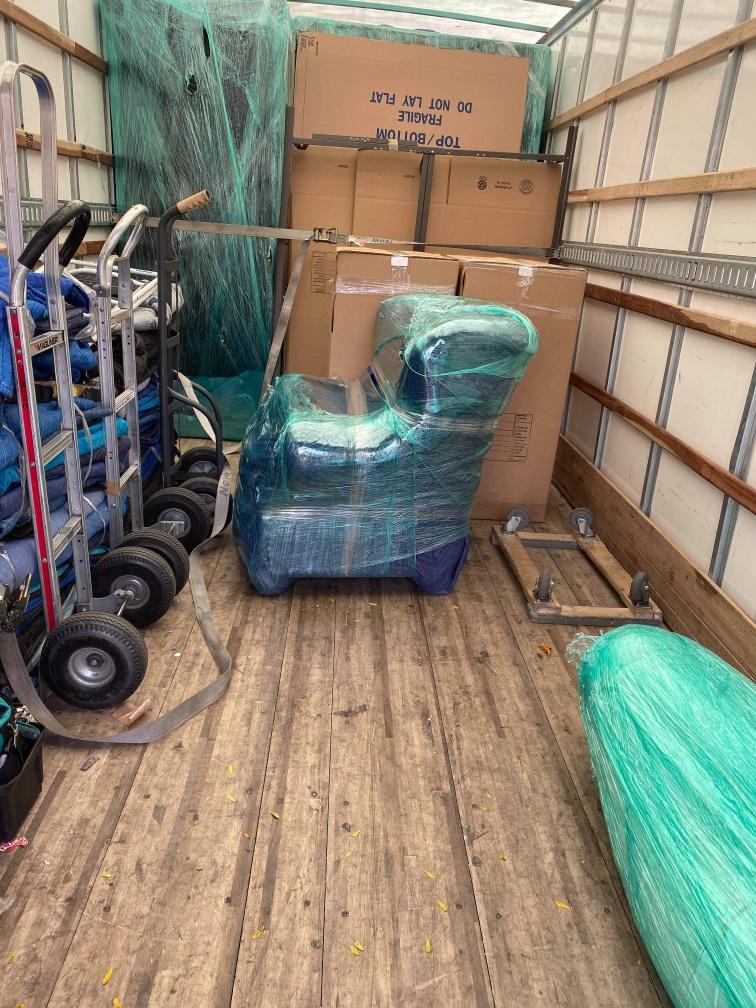Moving into a high-rise building can be a daunting experience, with it’s own unique challenges. There are numerous factors to consider, from navigating elevators and loading docks to adhering to building rules and regulations. To ensure a smooth and stress-free transition, careful planning and organization are essential. This comprehensive guide will provide you with the necessary knowledge and strategies to effectively manage your high-rise move.
1. Start Planning Early
Don’t wait until the last minute to start planning your move. Begin by creating a moving checklist and timeline, outlining the tasks and deadlines for each stage of the process. This will help you stay organized and avoid last-minute panic. Working off your checklist, you can track your progress effectively as your move date approaches.
![]()
2. Decluttering and Downsizing:
Moving into a high-rise apartment often necessitates downsizing. Take this opportunity to declutter your belongings, donating or selling items you no longer need or use. This will not only reduce the amount of stuff you need to move but also declutter your new living space.
 It will make your arrangements with your moving company easier and more accurate, resulting in a smoother move and less chance of miscommunication during and after the move.
It will make your arrangements with your moving company easier and more accurate, resulting in a smoother move and less chance of miscommunication during and after the move.- You have a clear picture of exactly how much “stuff ” you really have! This is especially important for people who have lived in the same place for a long time. We often accumulate things and store them in a way that leads us to believe we have much less than we actually do.
- It gives you the opportunity to make decisions about what you need to take and what can be sold, donated or purged before you move. You can save money on your moving expenses by reducing the total number of items to be moved.
- Identify what’s important. Rather than to simply get rid of your items at the last minute, doing an inventory early in the moving process allows you time to consider the items, furniture etc. that may have sentimental value and you aren’t quite ready to part with yet. If the particular item does not make sense to move to the new location, then perhaps some off-site long term storage might be an option to consider.
3. Research Building Policies:
Make your move less stressful by having everything at your fingertips
Familiarize yourself with the building’s moving policies and regulations. High Rise building often have much more rigid rules regarding the use of the building public spaces vs. a single family home or small apartment building. Adhering to these rules will ensure a smoother move and avoid any potential conflicts with building management.
- Confirm if your building requires you to establish a designated moving time with the building management office. Verify the exact date and time that you will be moving and coordinate with your professional moving company if you are using one. Inquire if there are any permits that you or your movers are required to have.
- Elevator Usage: Similarly to booking an established time to move within your building, you may be required to reserve elevator usage. Many buildings will require use of a freight elevator vs. the passenger elevators.
- Parking and loading dock usage: It is imperative to reserve the access to the loading dock if your building has one. If not, there needs to be adequate parking available to park the moving truck(s) in a close and convenient location on the day of the move

3. Moving Supplies and Utility Items
Your professional movers should have all the materials necessary for a High-rise move.
-
Protect Common Areas: Protect the building’s common areas, such as hallways and floors, by laying down plywood or protective coverings to prevent damage from furniture or moving equipment.
-
Utilize Carts and Dollies: Utilize carts, speeders and dollies to transport boxes and heavy items, minimizing strain and reducing the risk of accidents.
- Protect Elevators: Most freight elevators are equipped to handle heavier loads and are not finished with delicate materials. If a common elevator is to be used however, it is important to use moving pads, cardboard or other protectant items to protect the interior of the elevator.
- Insurance: Consider opting for the most comprehensive moving insurance to protect against any possible damages. If you are renting and carry a renter’s insurance policy, see what coverage, if any, extends to the act of moving into or from an apartment. If you are hiring a professional moving company, inquire about the various moving insurance options that they offer..






